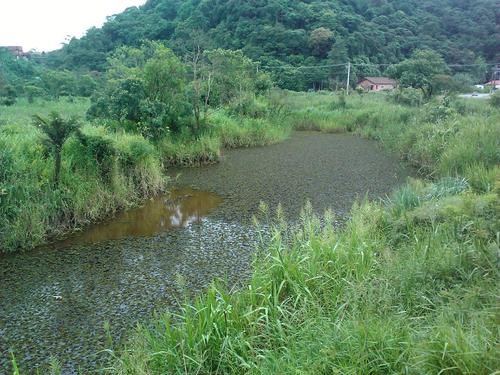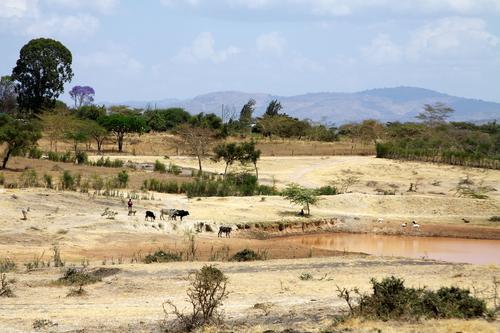Open ponds or pans, naturally occuring pans, excavated ponds
Open ponds or pans
The terms ponds and pans are often used interchangeably; however, in general pans describe structures used by herders while ponds are used by farmers. They store runoff collected from cultivated hill slopes, grasslands, natural watercourses, gullies, roads, footpaths or cattle tracks. The stored water usually suffers from losses due to seepage and evaporation.
Naturally occurring pans
These form in depressions where rainwater accumulates during the rainy season and there is no outflow. They are best suited for livestock water although some people still use them for domestic supply. In West Africa they are known as mare naturelle.
Excavated ponds
They exist in many different sizes – from 200 to 500 m3 for individual households – and up to 10,000 m3 at the community level. They are often started with small capacity and are expanded over the years. Well-known examples are hafirs / hafair which consist of dugout enlargements of natural depressions in the savannah of Sudan, or lacs collinaires in Algeria, madgen in Morocco, deeg in Senegal, charco ponds in the drylands of Tanzania, khaks in Turkmenistan or mahafurs in north-west Arabia (Saudi-Arabia) which are commonly used for livestock consumption. Traditionally hafirs were developed and managed as livestock drinking troughs nowadays they can also provide water for irrigation or drinking water especially there were other water sources are not available. To reduce seepage the pond bottom can be compacted or lined with masonry, concrete or durable plastic sheets. In south-western China, water is collected from small streams in the rainy season and stored in small ponds to irrigate sugar cane, mulberry and tobacco crops. Once an upstream pond is full, the water flows to the next pond downstream and so on. (Mekdaschi & Liniger 2013)



